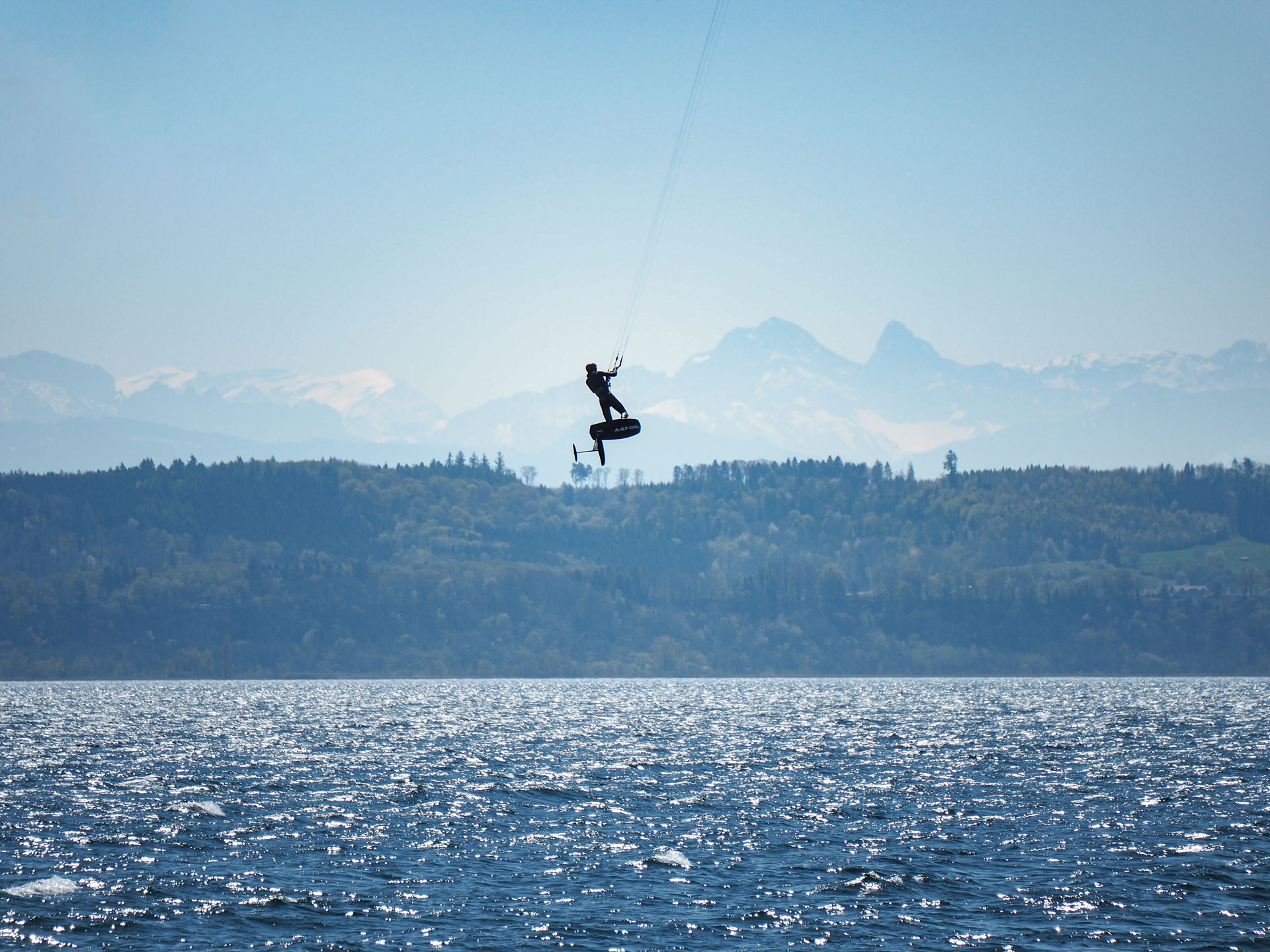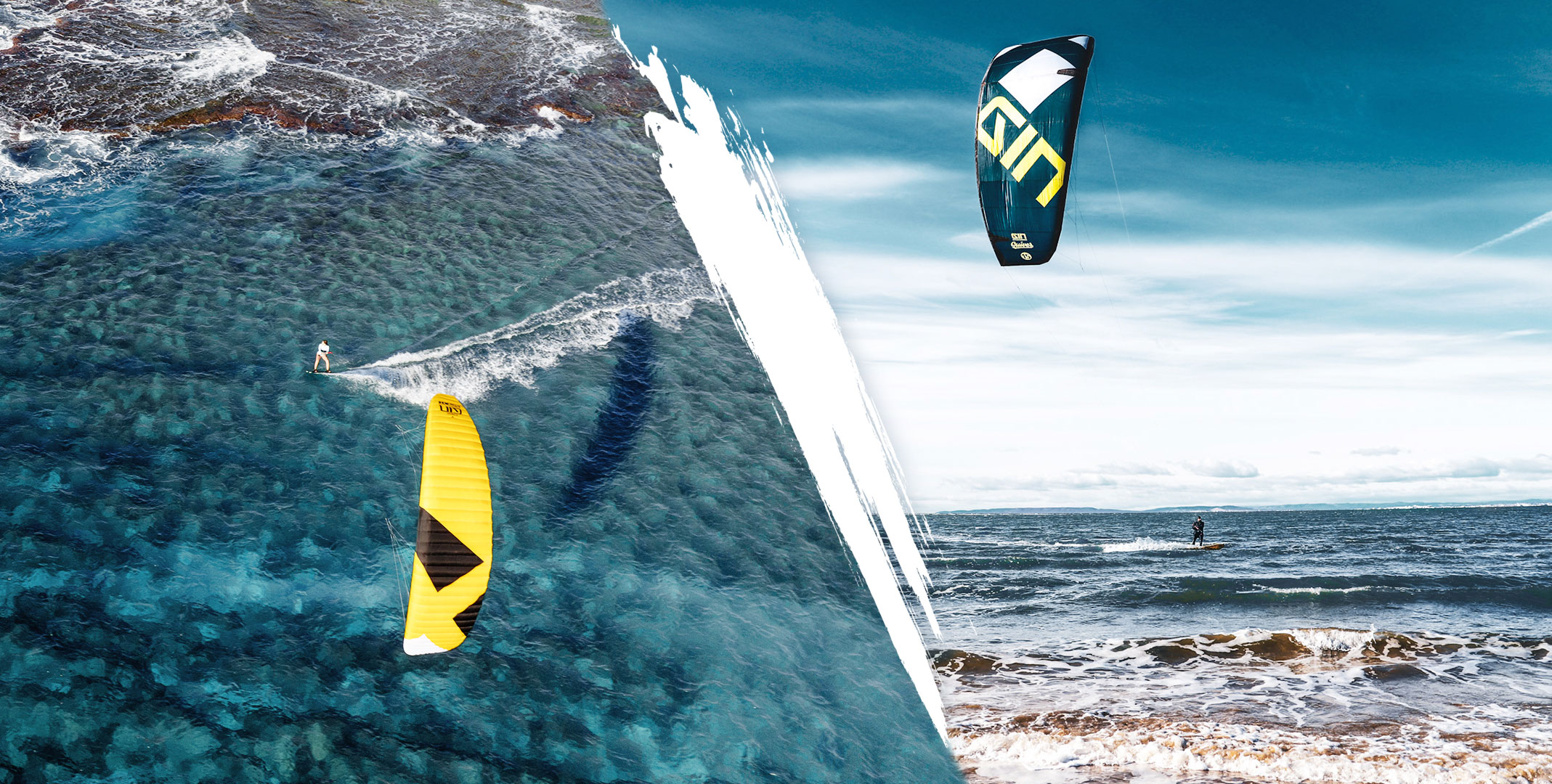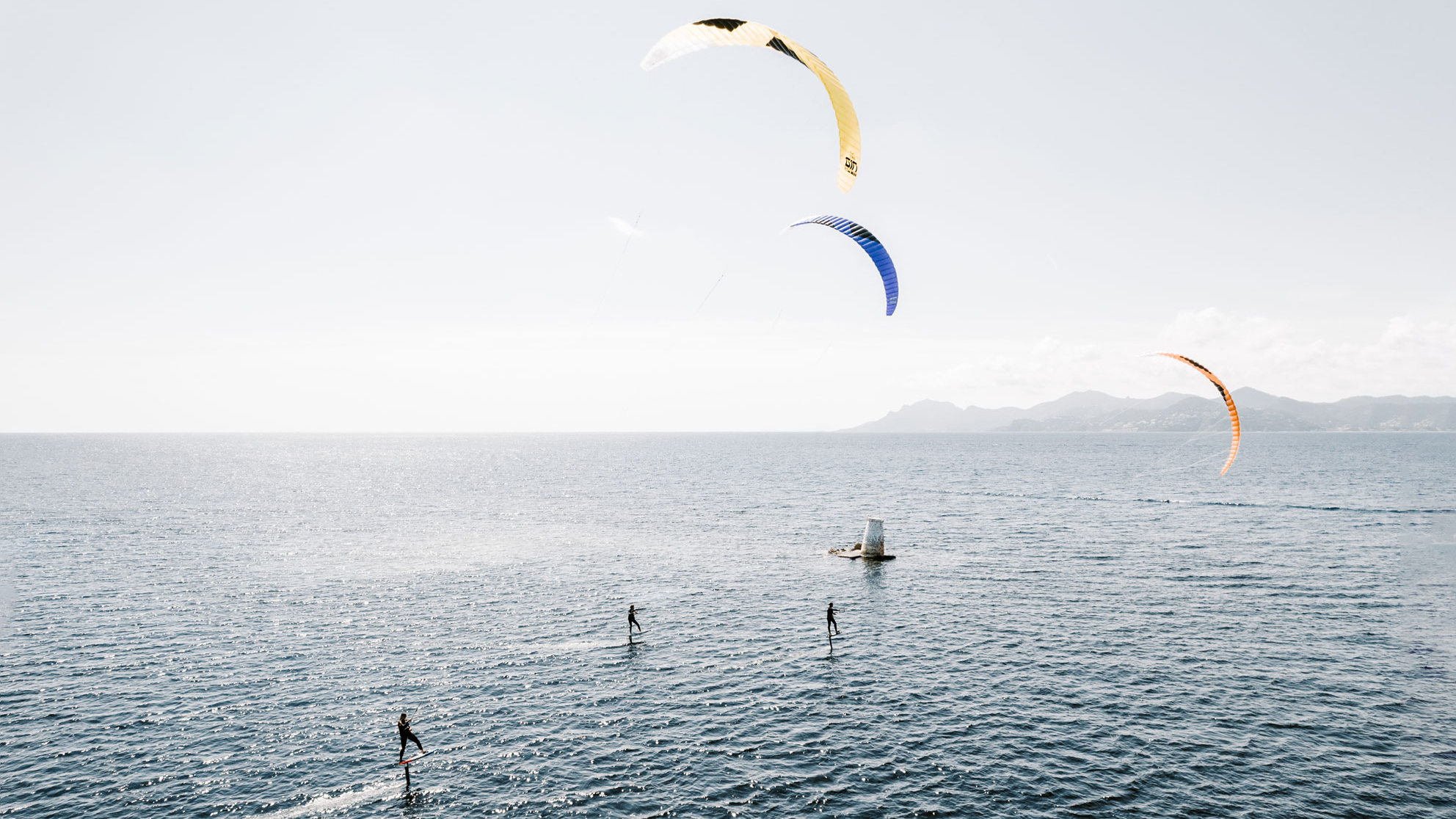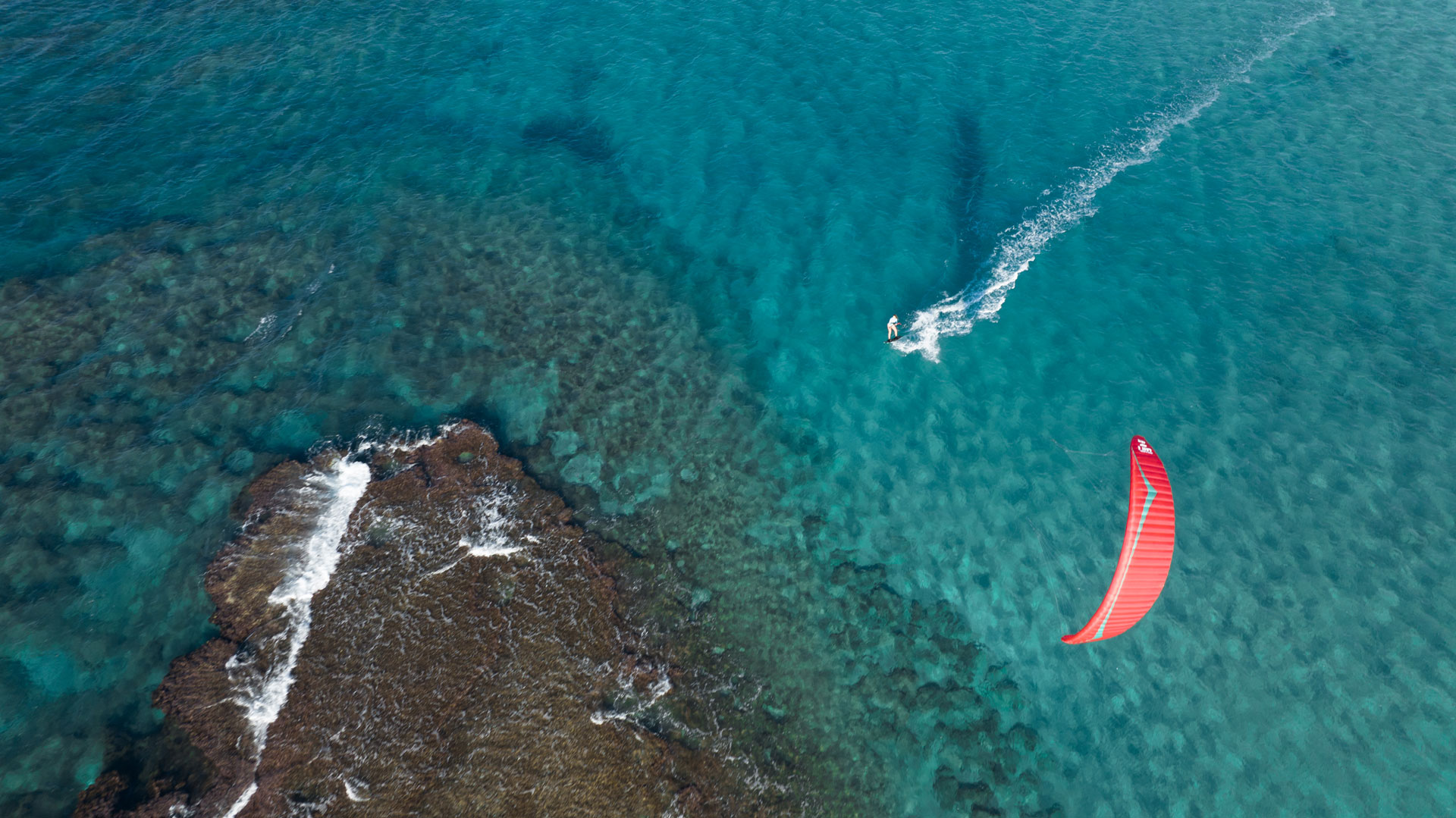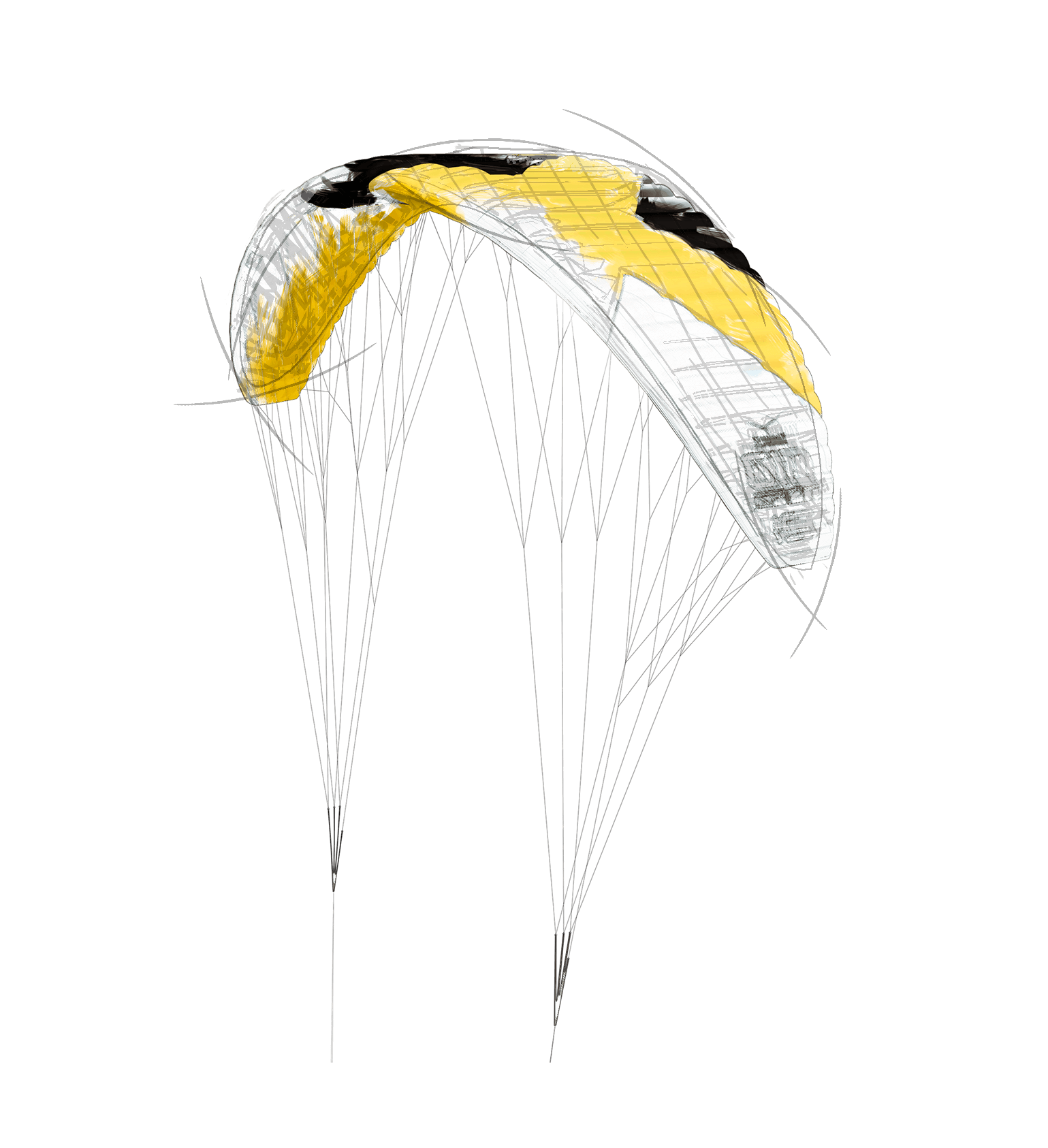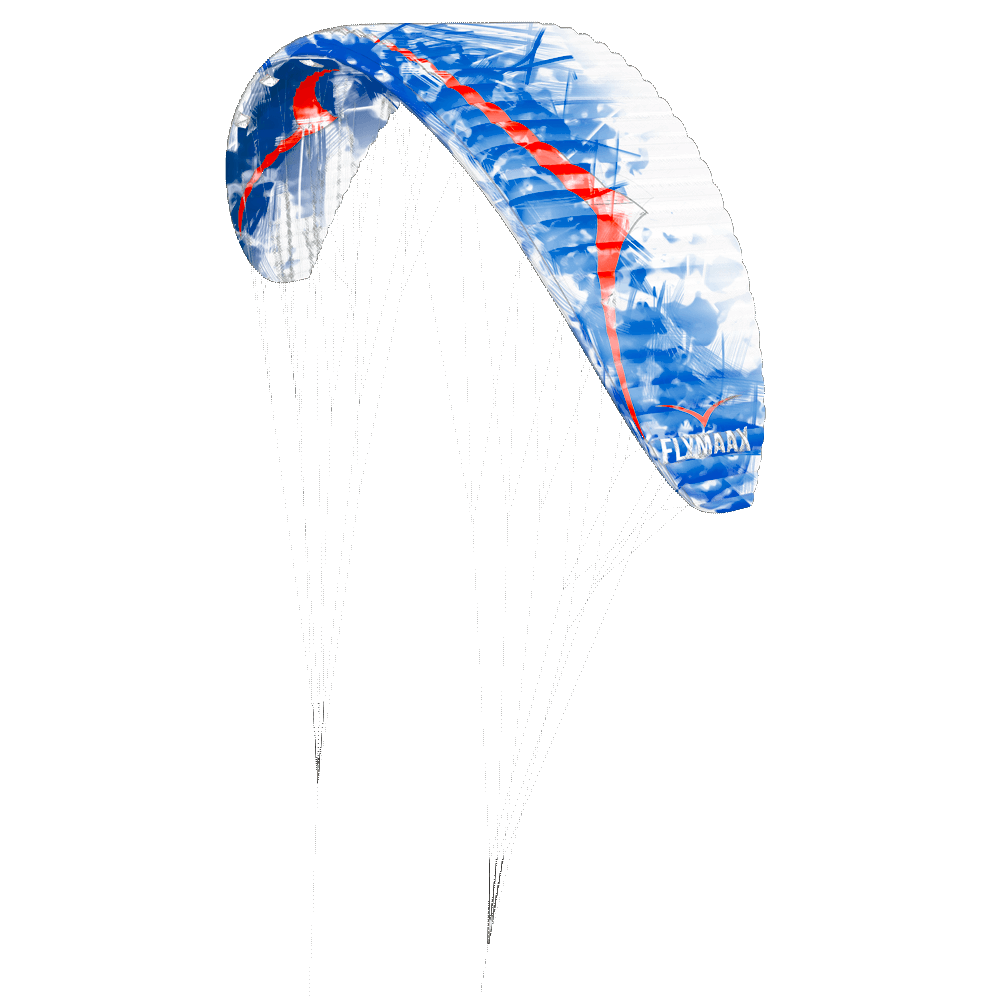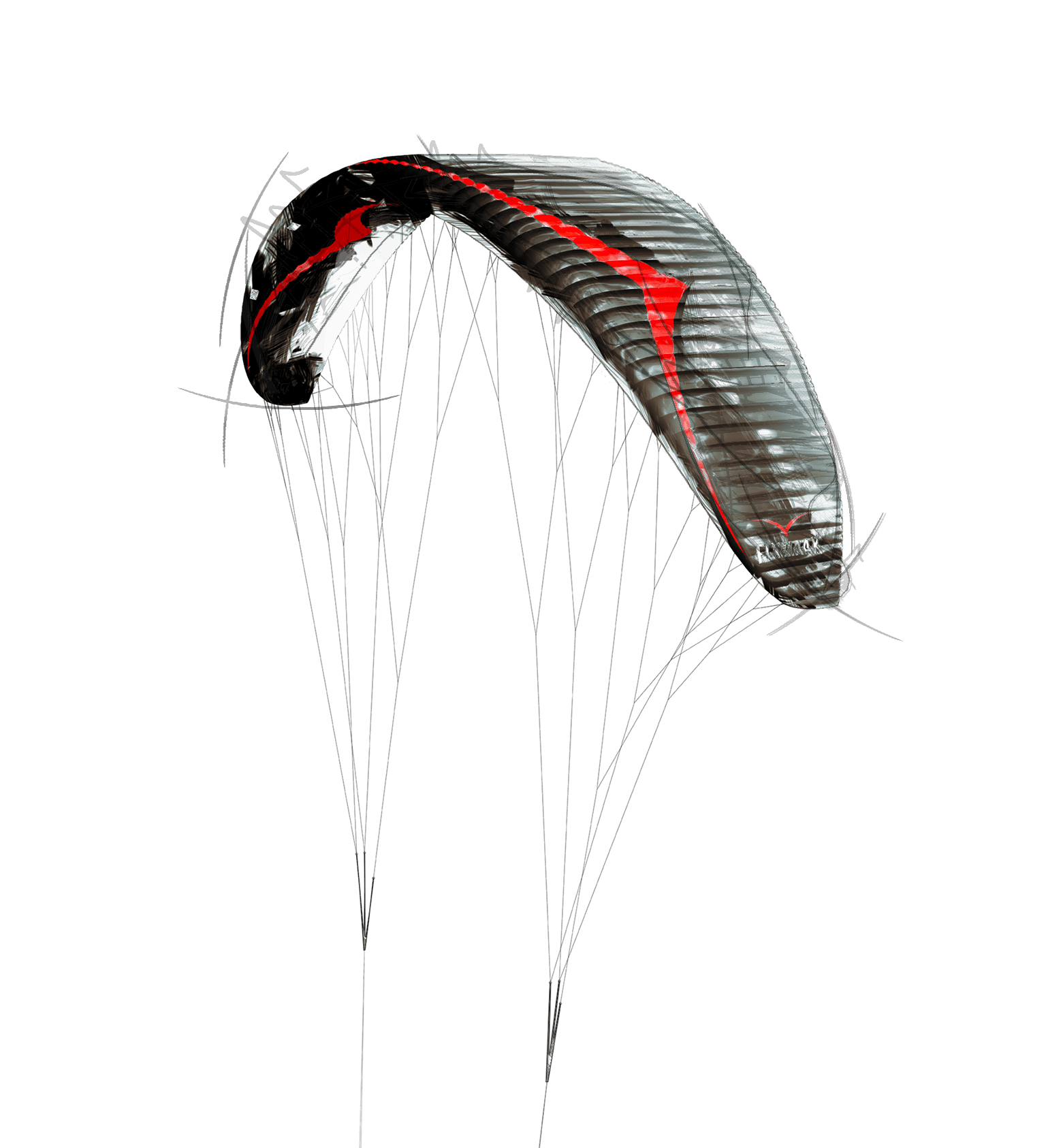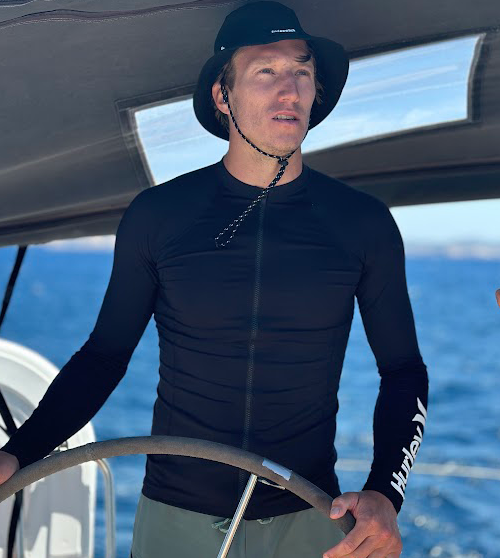THE ULTIMATE CONFRONTATIONRAM-AIR KITES VS INFLATABLE KITES
Since its inception, kiteboarding has constantly kept on evolving. With the advent of the ram-air kite trend (or foil kite), kiteboarding experienced one of its main upheavals. At first, these types of kites were merely appealing to racers and kitefoilers. But evolutions eventually end up in the hands of disrupters, who are then triggering a true revolution in the sport’s practice.
Therefore, riders started to favor the use of ram-air kites to start twintipping, foiling or surfing thanks to the unique power they give off. And more recently, an increasing number of riders have acknowledged the advantage of riding and jumping with foil kites, since they offer a better hang-time, and allow the rider to focus up in the air.
LET'S COMPAREPROPERTIES
Upon talking with Leif Given, who has been in the kiteboarding industry since the beginning, we were able to highlight all the key features of ram-air kites and compare them with the most commonly used inflatable kites. An inflatable kite is usually considered as more user-friendly and easier to set up than a ram-air kite, which is generally seen as a more advanced and high-performance option.
PERFORMANCES
Ram-air kites are known for their superior performances, more particularly in light winds. Overall, they generate far more speed, more power and offer better upwind ability than inflatable kites, which tend to be less efficient in those fields. This means that they may struggle in lighter wind conditions or when trying to ride upwind.
Ram-air kites are known for their superior performances, more particularly in light winds. Overall, they generate far more speed, more power and offer better upwind ability than inflatable kites, which tend to be less efficient in those fields. This means that they may struggle in lighter wind conditions or when trying to ride upwind.
STABILITY
As a result of their rigid structure, ram-air kites are more stable in the air, and therefore easier to control. Inflatable kites can be more prone to collapsing or “flapping” in gusty wind conditions, which can make them less stable and more difficult to control. This can also become a safety concern, as it may increase the risk of accidents.
As a result of their rigid structure, ram-air kites are more stable in the air, and therefore easier to control. Inflatable kites can be more prone to collapsing or “flapping” in gusty wind conditions, which can make them less stable and more difficult to control. This can also become a safety concern, as it may increase the risk of accidents.
WEIGHT
Thanks to their self-inflatable construction, ram-air kites are lighter, making them easier to launch, fly and handle than inflatable kites, which are generally significantly heavier. This can notably be a disadvantage in strong winds, as the weight of the kite can make it harder to control.
Thanks to their self-inflatable construction, ram-air kites are lighter, making them easier to launch, fly and handle than inflatable kites, which are generally significantly heavier. This can notably be a disadvantage in strong winds, as the weight of the kite can make it harder to control.
WIND RANGE
Inflatable kites have a more limited wind range than ram-air kites, which only makes them suitable for certain wind conditions. This can be a serious disadvantage for riders who want a kite that can be used in a wider variety of conditions.
Inflatable kites have a more limited wind range than ram-air kites, which only makes them suitable for certain wind conditions. This can be a serious disadvantage for riders who want a kite that can be used in a wider variety of conditions.
SETUP
Inflatable kites are easier to set up, while ram-air kites require more intuition and experience. However, inflatable kites require more time to set up than ram-air kites, which can drawback a good number of riders who are looking for a quick and easy installation process.
Inflatable kites are easier to set up, while ram-air kites require more intuition and experience. However, inflatable kites require more time to set up than ram-air kites, which can drawback a good number of riders who are looking for a quick and easy installation process.
REPAIR
If an inflatable kite gets damaged, it can be more difficult to repair than a ram-air kite because of the bladder and other parts of the kite that may need to be replaced, which can be time-consuming and costly.
If an inflatable kite gets damaged, it can be more difficult to repair than a ram-air kite because of the bladder and other parts of the kite that may need to be replaced, which can be time-consuming and costly.
PRICE
Due to their advanced construction and higher performance capabilities, ram-air kites tend to be more expensive than inflatable kites, thus less accessible.
Due to their advanced construction and higher performance capabilities, ram-air kites tend to be more expensive than inflatable kites, thus less accessible.
IN A NUTSHELLCONCLUSION
The performance, stability and wind range of ram-air kites are superior to inflatable kites, but the price, complexity and user-friendliness are slightly different. There is really no limit to what can be done with ram-air kites, and we cannot wait to observe the upcoming new generations of riders getting the most of those amazing products.
FIRST-RATE SKILLSBIG AIR
It is well-known that ram-air kites take their origins from the paragliding world. As a matter of fact, the feeling of flying with a glider was successfully replicated into ram-air kites when jumping. So what better tool to use for long air-times and smooth landings than one with a construction originally made for flying in the air? If you ask us, foil kites may very well be the future of big air.
The Gin Instinct HB makes nearly anything possible. Its hang-time is absolutely unreal for sending big tricks in the air and landing smoothly. It facilitates big air skills for experienced riders looking for a fast, stable and responsive kite in any conditions. Leif Given uses it to send himself to the moon with jumps reaching up to 25 meters in height, while Eloi Rondeau is easily able to slope fly for 3 or 4 minutes straight during his snowkite sessions.
The Instinct HB has a gigantic potential for even higher record with riders constantly pushing to elevate themselves to the maximum.
